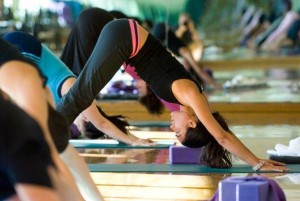Before reading this blog post, wherever you are, breathe in and breathe out. Concentrate on the inhale where the cool air moves through your nostrils, the chest and belly expands, and then exhale fully. Do this twice more, observing the breath and the sensations that come. Well done, you have just breathed mindfully. Simple huh?
Breathing is something that we all do, all of the time. By bringing our focus onto the breath we can work on being present in the moment.
You can do the following exercise for just a few minutes, or for longer, it’s up to you. During this you may find your mind drifting, this is ok and totally normal (even for seasoned practitioners). When you notice thoughts coming into your mind, gently but firmly bring your attention back to the breath. This practice of breathing mindfully is a great first step for developing a pranayama practice.
Preparation
Sit or lay in a comfortable position. You may close the eyes or keep them open with a soft gaze, you may want to rest your hands on the stomach and help you connect to your breath and feel it in a more physical way.
The Breath
Inhale, notice the feeling of the cool air moving through the nostrils into the lungs. The chest and belly expand at the top of the inhale. Exhale through the nose, the chest and belly contract, navel to spine. Continue the breath, feel what it is really like to breathe. Notice the calming effect it has on the body and the mind, observe the sensations without judgement.
You may find that the mind wanders from time to time - this is normal. Acknowledge the thought, and then come back to the breath - it can help to imagine your thoughts as books: allow yourself to look at the cover, read the title and then consciously put it on the shelf to read later.
Reflect
Once you have finished the exercise, take a few moments to notice how you feel. Enjoy the experience you’ve just had connecting to yourself and your breath, body and the space around you and within you. Know that you can always come back to this practice at anytime and anywhere (even in the queue at the supermarket!).
Next Steps
Take this mindful breath and apply it throughout your yoga practice, keep focused on the breath for the duration and observe how it affects your practice.
Tried it? Let us know how you get on. You can share your experience on Instagram, Twitter or Facebook using #camyogis




